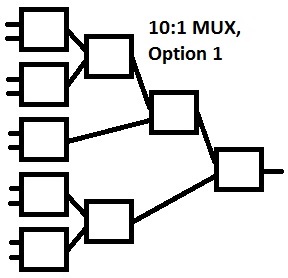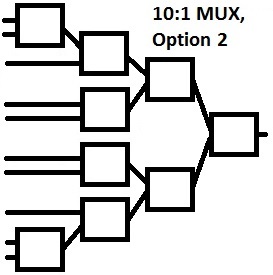Other Parts Discussed in Thread: TS3V330, TS3V340, TS3V712E, TS3V712EL
I need to take 10 VGA sources (ports) and multiplex down to 1 output monitor display.
The TS3V713EL says it can be used as a 2:1 mux. Do I take 9 of these devices to implement the 10 to 1 mux? Any other recommendations? Thank you.





